Vegan Globetrotter is supported by our audience. When you purchase through one of our links, we may earn a small affiliate commission. As an Amazon Associate I earn from qualifying purchases. Your cost is not affected.
==================
When it comes to enjoying vegetables, most of us are accustomed to the sizzle of a hot pan or the gentle steam rising from a pot. But what if we told you that one of spring’s most celebrated vegetables, asparagus, doesn’t need any of that? That’s right—raw asparagus is not only edible but also offers a crisp, refreshing alternative to its cooked counterpart. In this article, we’ll dive into the surprising world of raw asparagus, uncovering its unique benefits, potential risks, and delicious ways to incorporate it into your diet. Get ready to rethink everything you thought you knew about this green spear of goodness!
Exploring the Raw Asparagus Experience in Your Diet: Everything You Need To Know
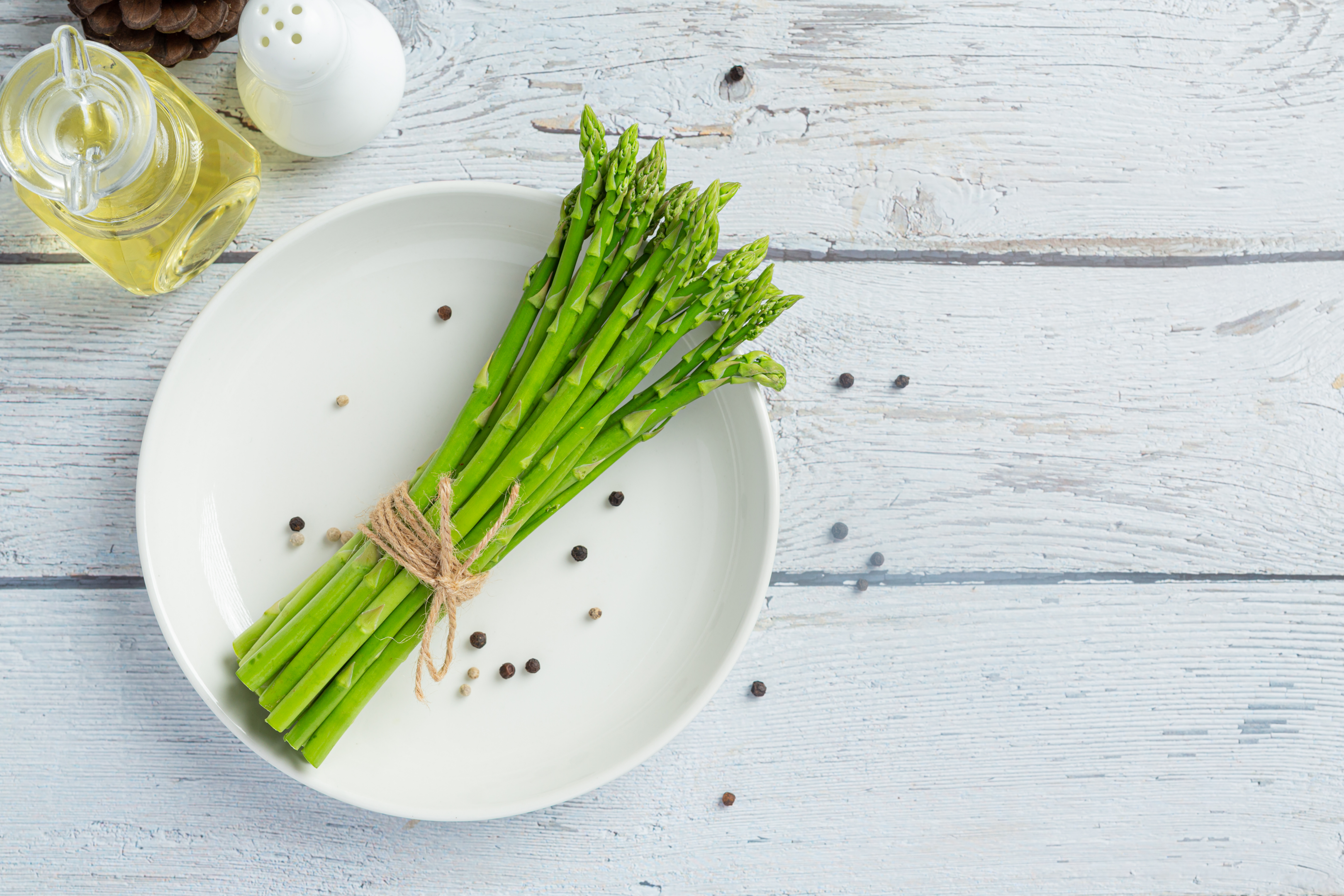
Asparagus is a nutritious vegetable packed with vitamins and minerals. It’s used in various culinary traditions worldwide. It’s known for its health benefits, like boosting the immune system and supporting heart health.
However, the debate on whether raw Asparagus is safe for consumption raises questions about its proper preparation and nutrient absorption. Let’s delve deeper into the raw debate surrounding asparagus consumption and explore the intricacies of incorporating this vegetable into your diet.
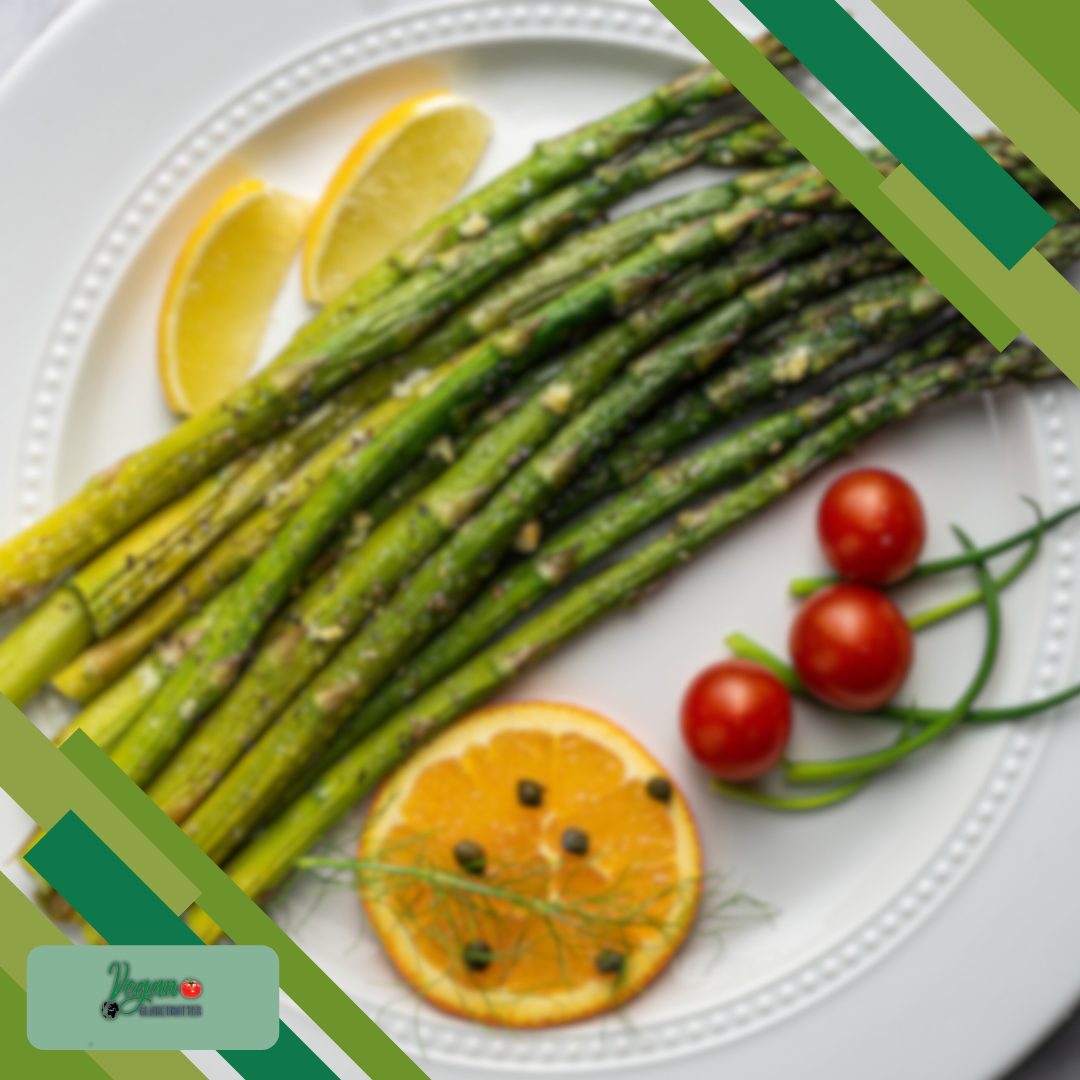
Key Highlights
- Asparagus is a healthy and tasty vegetable that may be eaten raw or cooked.
- Raw Asparagus retains more of its nutrients compared to cooked Asparagus.
- Eating raw Asparagus can offer a variety of health benefits, like better digestion and a stronger immune system.
- Raw Asparagus may be harder to digest for some people and can cause digestive discomfort. Proper preparation and handling are important to safely consume raw Asparagus.
- There are also many delicious ways to cook Asparagus that can enhance its flavor and nutritional value.
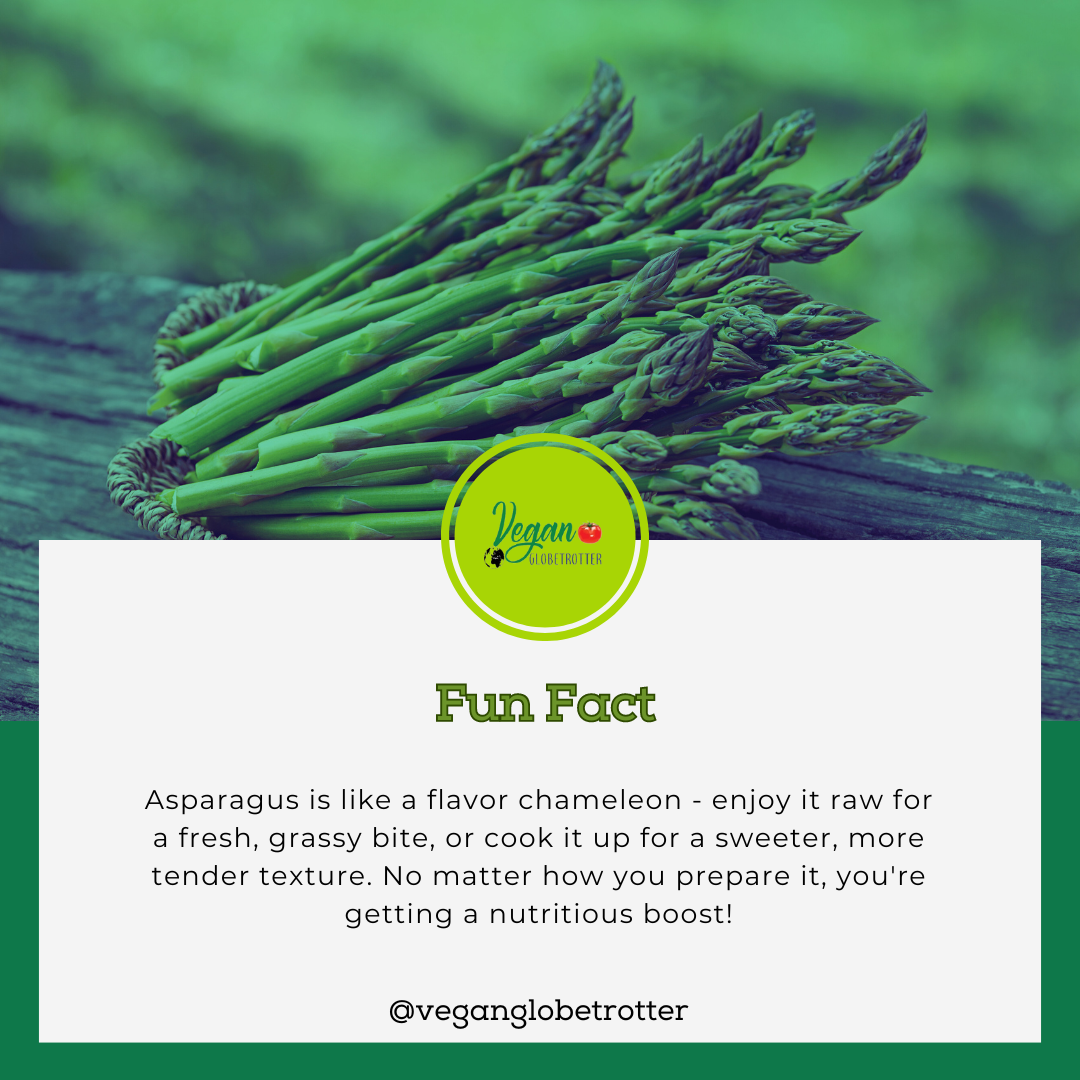
Understanding Asparagus: A Comprehensive Guide
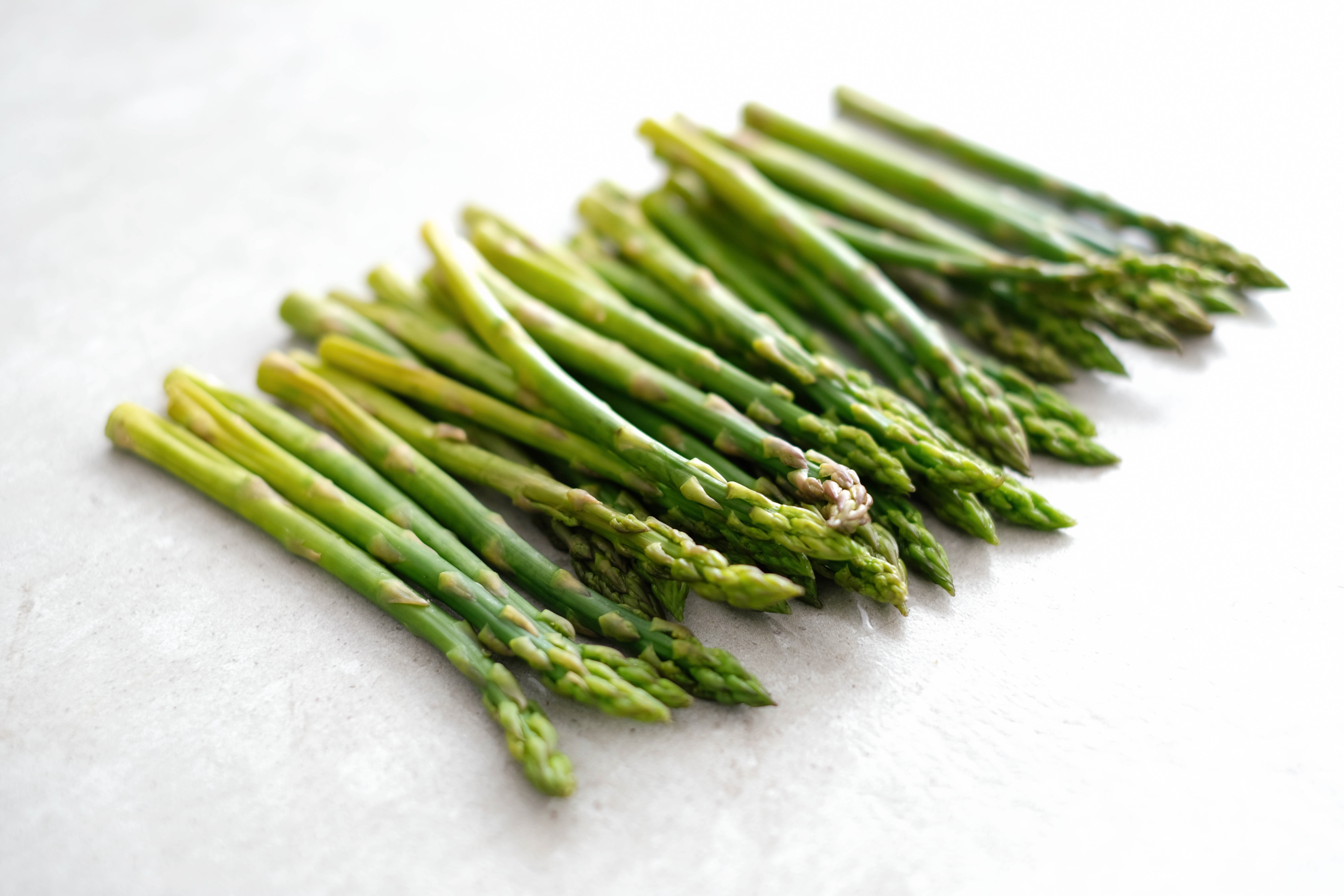
Asparagus, also known as Asparagus officinalis, is a super nutritious vegetable that offers a variety of health benefits.
The Nutritional Profile of Asparagus
Asparagus is a powerhouse of nutrients. Packed with vitamins K and C, it supports blood clotting and boosts immunity. This vegetable is also rich in folate, which is vital for pregnant women. Asparagus abounds in soluble fiber, aiding digestion and lowering blood sugar levels. It contains asparagusic acid, which is known to cause the unique post-asparagus pee smell. With minimal calories and lots of fiber, Asparagus is a must-add to your diet for its vast nutritional benefits.
Varieties of Asparagus and Their Characteristics
When it comes to asparagus varieties, there are three main types: green, white, and purple.
- Green Asparagus is the most common and widely available type, known for its vibrant color and powerful flavor.
- White Asparagus is grown underground, protected from sunlight, which gives it a milder flavor and a more delicate texture.
- Purple Asparagus, with its striking hue, offers a slightly sweeter flavor than the green variety.
Each type brings unique characteristics to the table, catering to diverse culinary preferences.
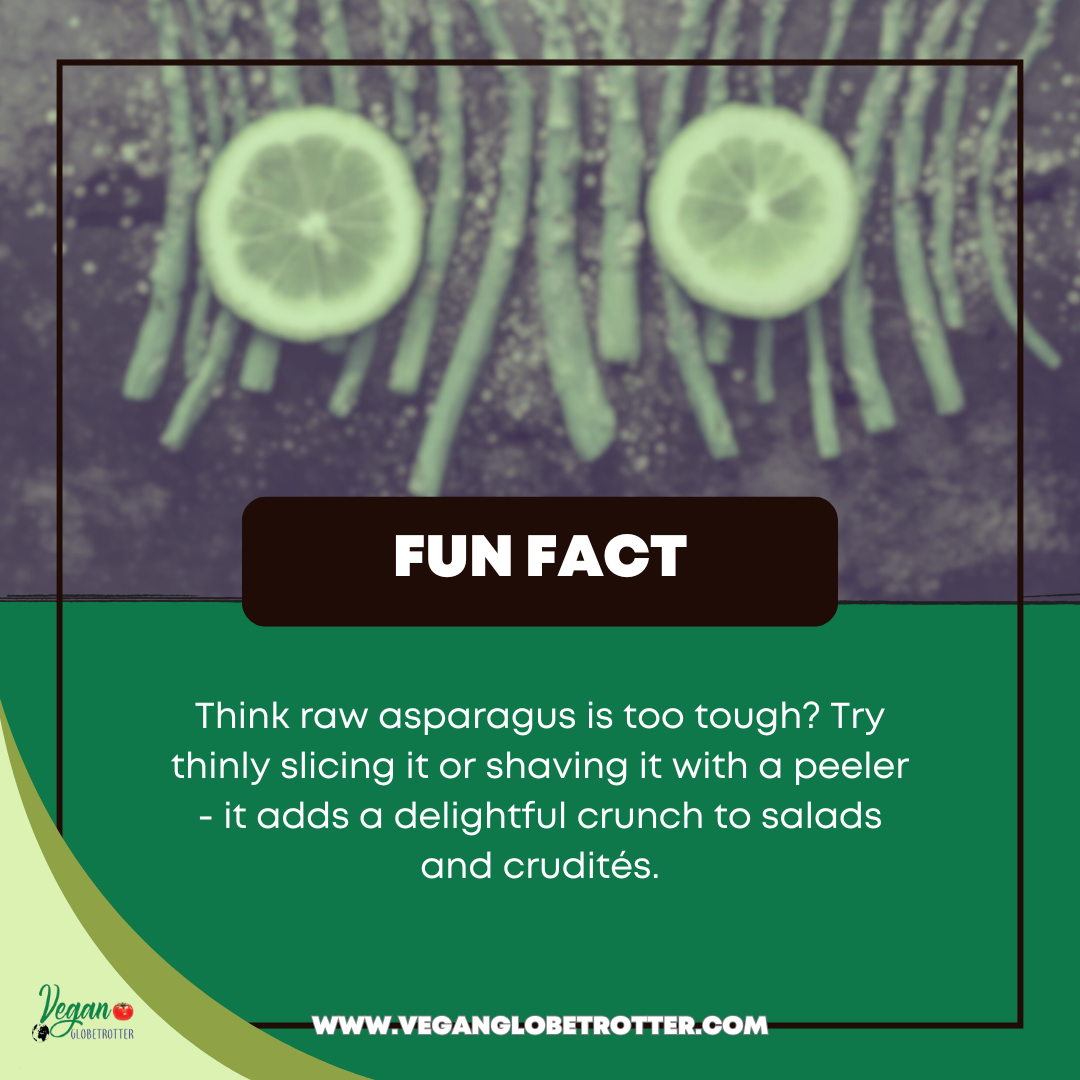
Did You Know?
Asparagus is a type of perennial flowering plant found in the genus Asparagus, originally from Eurasia.
Health Benefits of Incorporating Asparagus into Your Diet
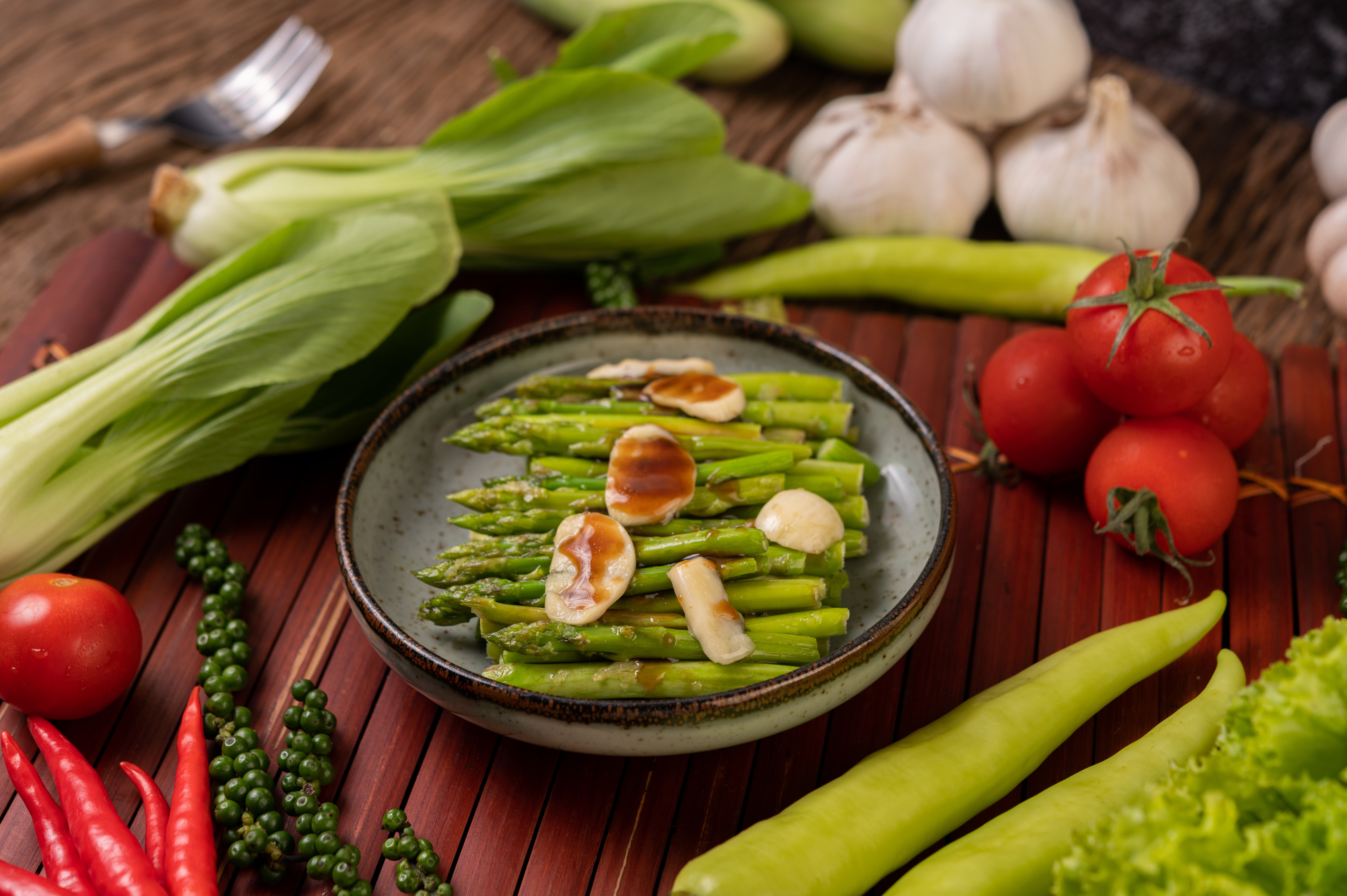
Asparagus is a powerhouse vegetable with many health benefits when you include it in your diet. Here’s why you might want to think about adding it to your meals:
Boosting Your Immune System with Asparagus
Asparagus, a powerhouse veggie, can do wonders for your immune system. Packed with immune-boosting nutrients like vitamins K and C, Asparagus strengthens your body’s defense mechanism against illnesses.
These essential vitamins aid in protecting cells and supporting immune function. Incorporating Asparagus into your diet can help fortify your immune system and keep you healthy. Take advantage of this nutritious vegetable to give your body the extra support to fight off infections and stay well.
Asparagus and Its Role in Heart Health
Due to its rich nutritional content, Asparagus is crucial to heart health. Packed with vitamins C, E, and K, along with soluble fiber, it aids in lowering blood pressure and preventing blood clotting.
Asparagus also contains asparagusic acid, which may help reduce the risk of heart disease. Adding Asparagus to your diet can contribute to a healthy heart and overall well-being. Stay heart-healthy by incorporating this nutritious vegetable into your meals.
The Detoxifying Properties of Asparagus
Asparagus is renowned for its detoxifying properties, making it a valuable addition to your diet. Filled with antioxidants and vital nutrients such as vitamins K and C, Asparagus supports your body’s natural detox processes.
These properties help to counteract harmful free radicals, support liver health, and assist in removing toxins from the body. Including Asparagus in your meals can effectively support your body’s detox mechanisms and contribute to overall health and well-being.
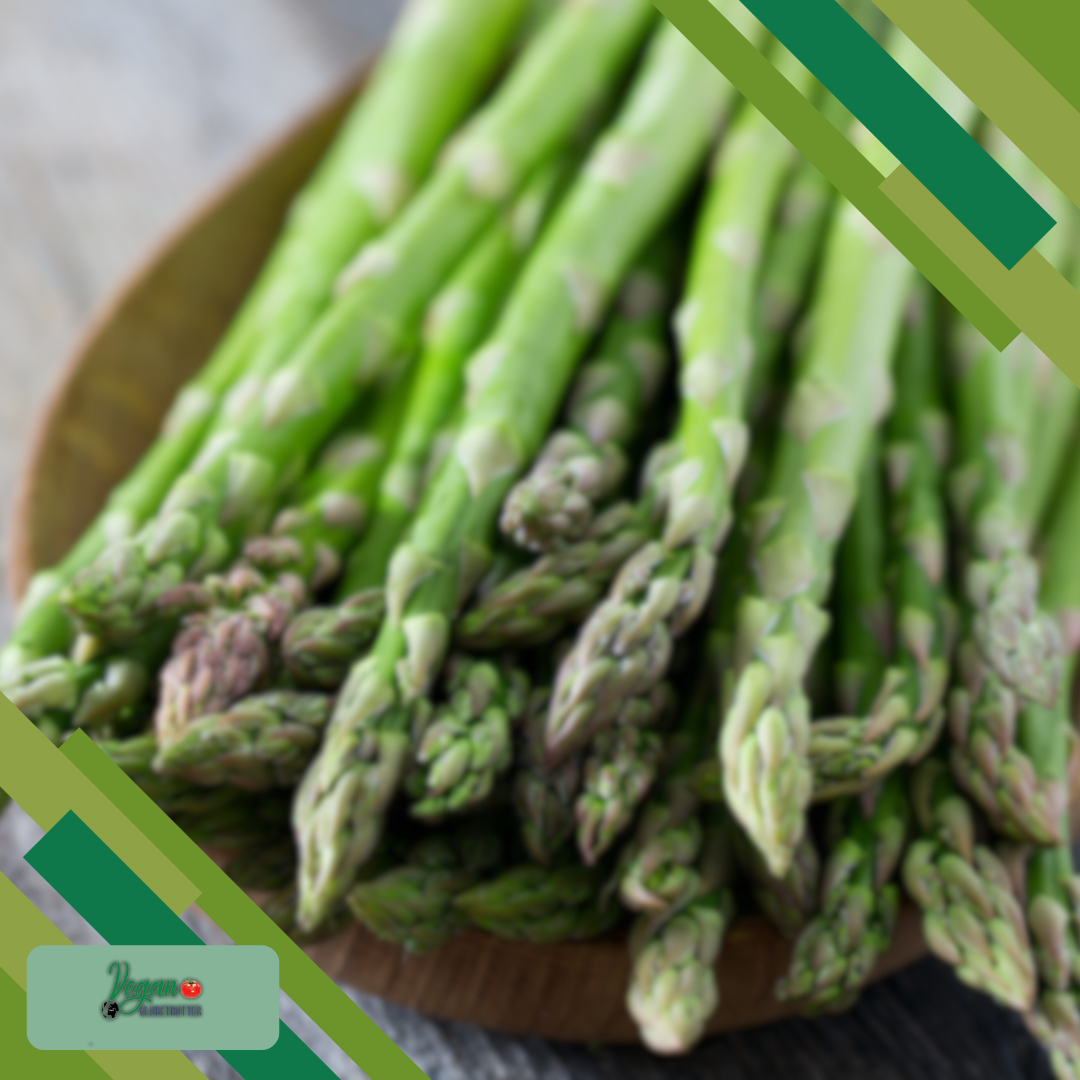
By: Dr. Eric Berg DC
Asparagus in Culinary Traditions Around the World
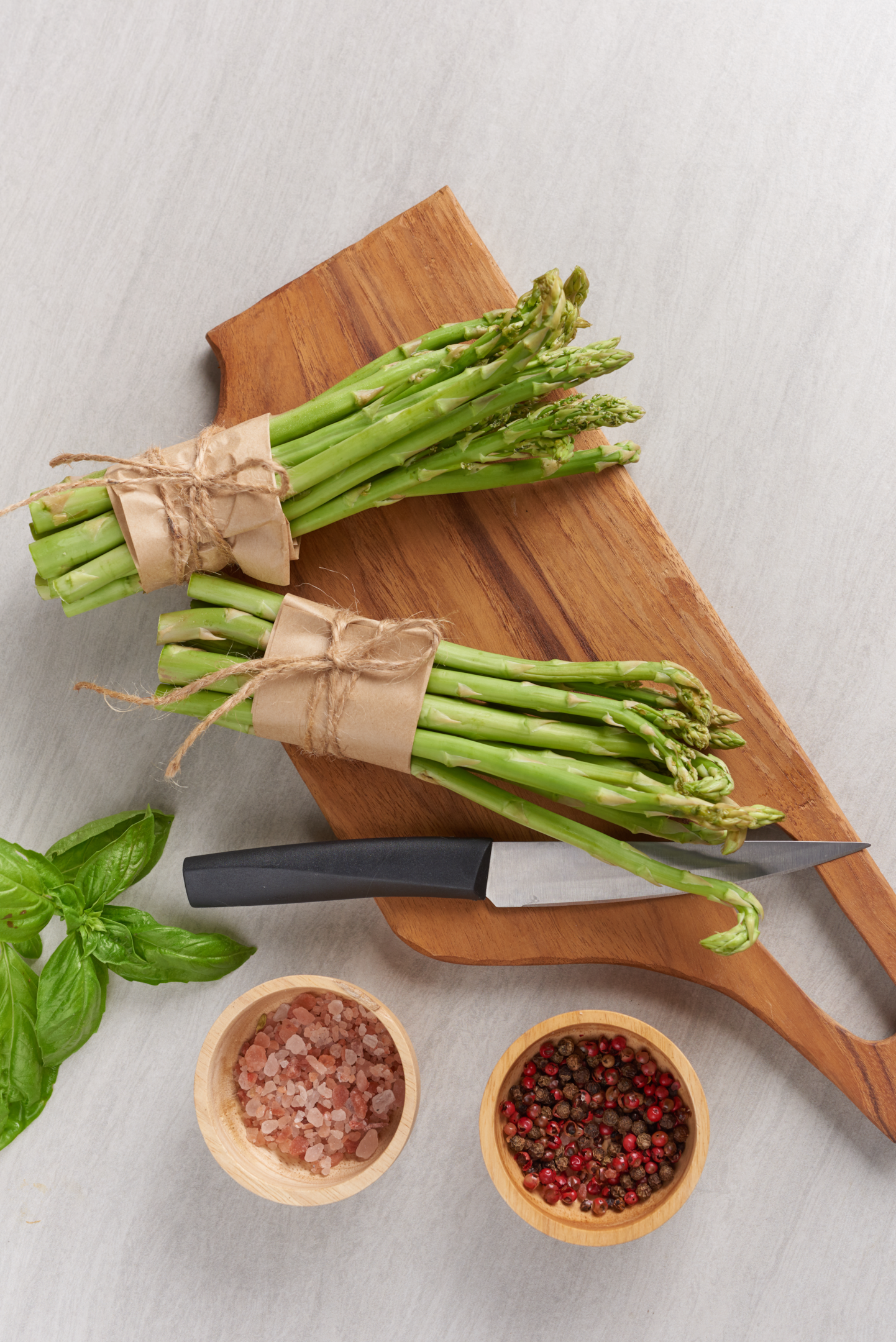
Asparagus has been a part of culinary traditions around the world for centuries. It is a versatile ingredient that is used in a variety of dishes in different cultures.
In European cuisine, Asparagus is often featured in classic dishes such as asparagus soup, roasted Asparagus, or as a side dish to go with main courses. In Asian cuisine, it is commonly found in stir-fries and noodle dishes.
The unique flavors and textures of Asparagus lend themselves well to a wide range of global cuisines. Both chefs and home cooks love its versatility and use it often in their dishes.
Traditional Asparagus Dishes from Various Cultures
Asparagus is culturally significant in various cuisines, and traditional recipes featuring this vegetable have been passed down through generations.
The classic dish “Asperges à la Flamande” in France showcases Asparagus served with melted butter, boiled eggs, and parsley. In Italy, “Asparagi alla Milanese” is a popular dish that combines Asparagus with parmesan cheese and butter.
Stir-fried Asparagus with garlic and oyster sauce is a staple dish in China. In Japan, Asparagus is often used in tempura or served with miso soup.
These traditional asparagus dishes not only highlight the delicious flavors of this vegetable but also showcase the cultural heritage and cooking styles from various regions worldwide.
Modern Culinary Innovations Using Asparagus
In addition to traditional recipes, modern culinary innovations have embraced Asparagus as a versatile ingredient. Chefs and home cooks have explored creative ways to incorporate Asparagus into various dishes.
Asparagus can add a unique twist to traditional recipes, such as asparagus pesto or asparagus risotto. It can also be pickled or roasted to enhance its flavors.
Innovative chefs have also experimented with molecular gastronomy techniques to create unique dishes featuring Asparagus. For example, asparagus foam or asparagus-infused oils can enhance a dish’s flavor and visual appeal.
These modern culinary innovations showcase the versatility of Asparagus and its ability to elevate dishes to new heights.
Did You Know?
Asparagus is widely known as a vegetable crop, and its young shoots are enjoyed as a spring vegetable.
The Raw Debate: Eating Asparagus Uncooked
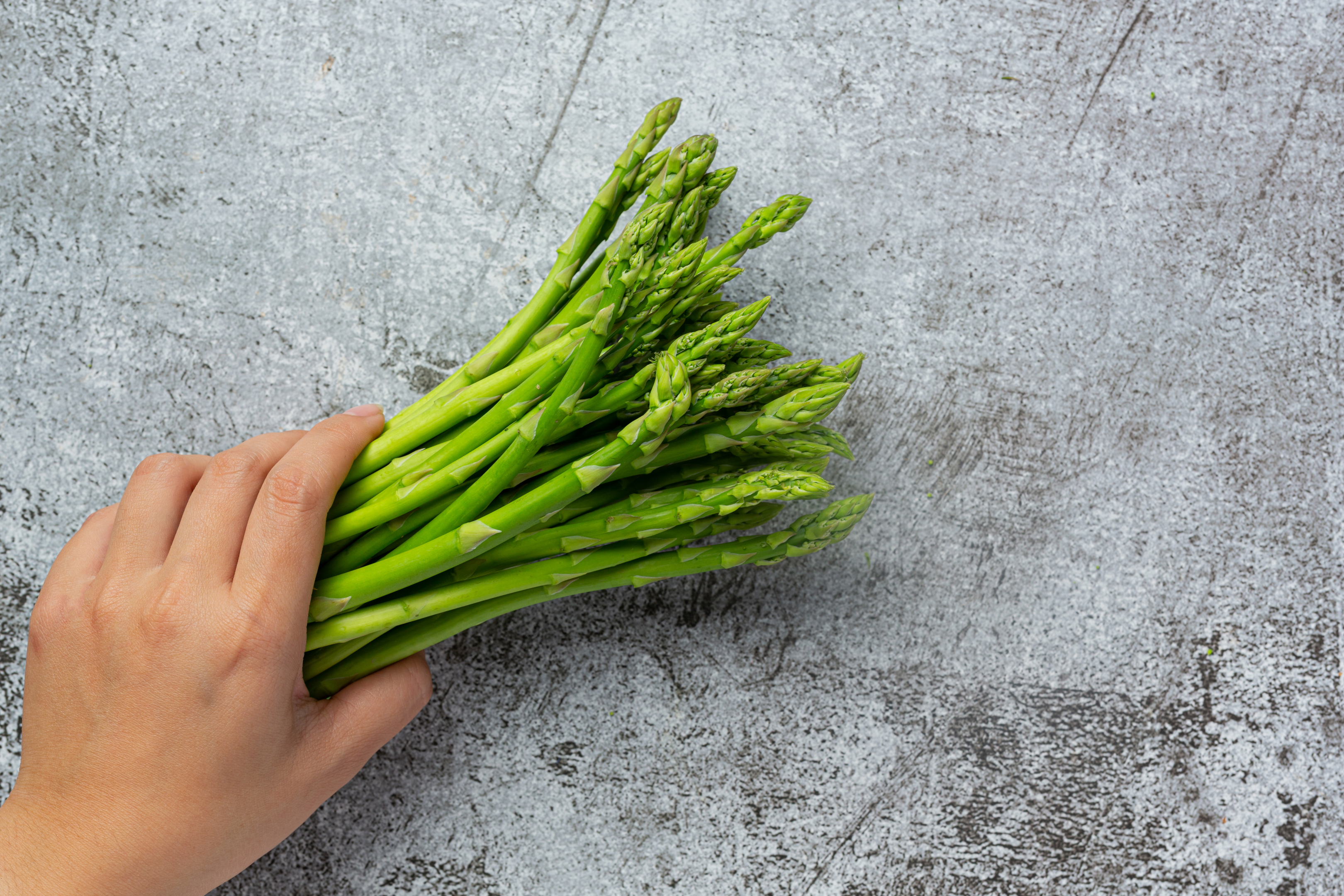
Safety should be a priority when it comes to raw Asparagus. Here’s what you need to know:
Safety Concerns with Raw Asparagus
There are a few safety concerns when consuming raw Asparagus. Raw Asparagus may contain harmful bacteria that can cause foodborne illnesses if improperly handled and cleaned. To reduce the risk of contamination, it’s crucial to wash raw Asparagus thoroughly and trim the woody ends before consumption.
Additionally, individuals with kidney issues should be cautious as Asparagus is a natural diuretic and may affect kidney function if consumed excessively. Always practice safe food handling to enjoy raw Asparagus without any negative effects.
Maximizing Nutrient Intake from Raw Asparagus
Consuming raw Asparagus promptly after cutting to prevent nutrient loss is essential to maximizing nutrient intake. Raw Asparagus is rich in vitamin K, a necessary mineral for healthy bones and blood clotting.
Combining it with vitamin C sources like lemon juice helps enhance iron absorption. Utilizing olive oil aids in the absorption of fat-soluble vitamins found in Asparagus. To benefit fully, enjoy a raw asparagus salad with lemon juice and olive oil to optimize nutrient absorption.
Preparing Asparagus for Raw Consumption: A How-to Guide

To enjoy raw Asparagus at its best, select fresh, firm spears. To prepare:
- Gently wash the Asparagus under cold water to remove any dirt.
- Trim the woody ends by snapping them off or using a vegetable peeler.
- For a raw asparagus salad, consider thinly slicing the spears or using a mandoline for a delicate texture.
- Before indulging in this nutritious vegetable delight, enhance the flavor by drizzling it with olive oil, adding a little lemon juice, and seasoning it with salt and pepper.
Cooking Asparagus: Enhancing Flavor and Nutrition
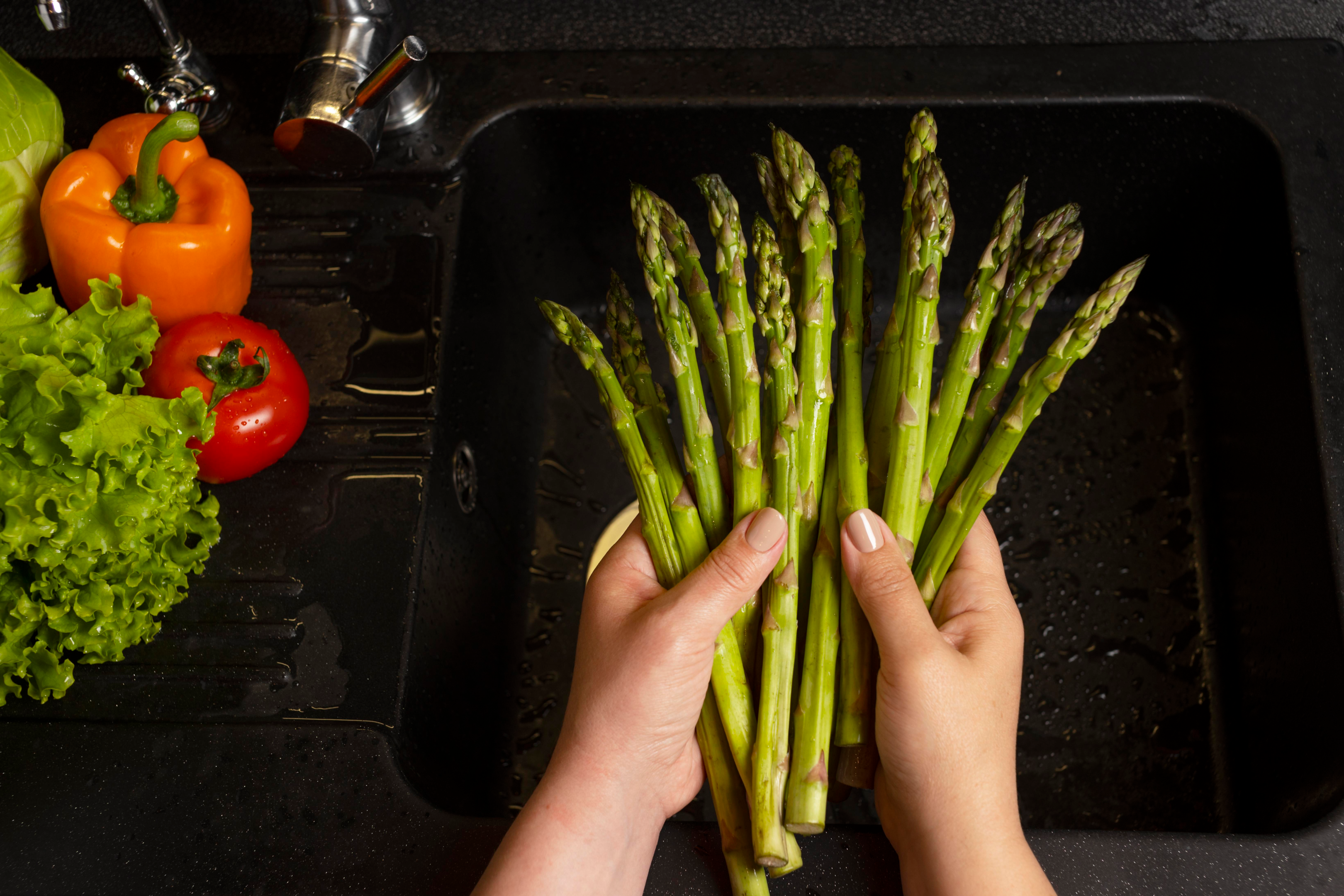
When cooking Asparagus, you can boost its flavor and nutritional value by adding simple ingredients and using different cooking techniques. Here’s the lowdown:
Simple Yet Delicious Ways to Cook Asparagus
One simple yet delicious way to cook Asparagus is by roasting it. Toss the raw spears in olive oil, sprinkle them with pepper and salt, and roast them in the oven until they’re tender yet slightly crispy.
Another tasty option is to grill the Asparagus. Brush the raw spears with olive oil, season with your favorite herbs or spices, and grill them until they have nice grill marks. These methods enhance the natural flavors of Asparagus, making it a delightful addition to any meal.
Tips for Preserving Nutrients During Cooking
When cooking Asparagus, it’s important to consider methods that preserve its nutrients. Blanching and steaming are two popular cooking techniques that can help retain its nutritional value.
Blanching involves briefly immersing Asparagus in boiling water, followed by transferring it to ice water to halt the cooking process. This method helps maintain the vegetable’s vibrant green color and crisp texture while preserving its nutrients.
Steaming is another great option. It involves cooking the Asparagus with steam instead of submerging it in water. This gentle cooking method keeps all the good stuff, like the vitamins and minerals, in the Asparagus.
Blanching or steaming can ensure that your cooked Asparagus remains nutrient-rich and delicious. These methods also help to bring out the vegetable’s natural flavors, making it an enjoyable addition to any meal.
By: PlantFIT Jen
Deliciously Raw: The Verdict on Eating Asparagus Uncooked
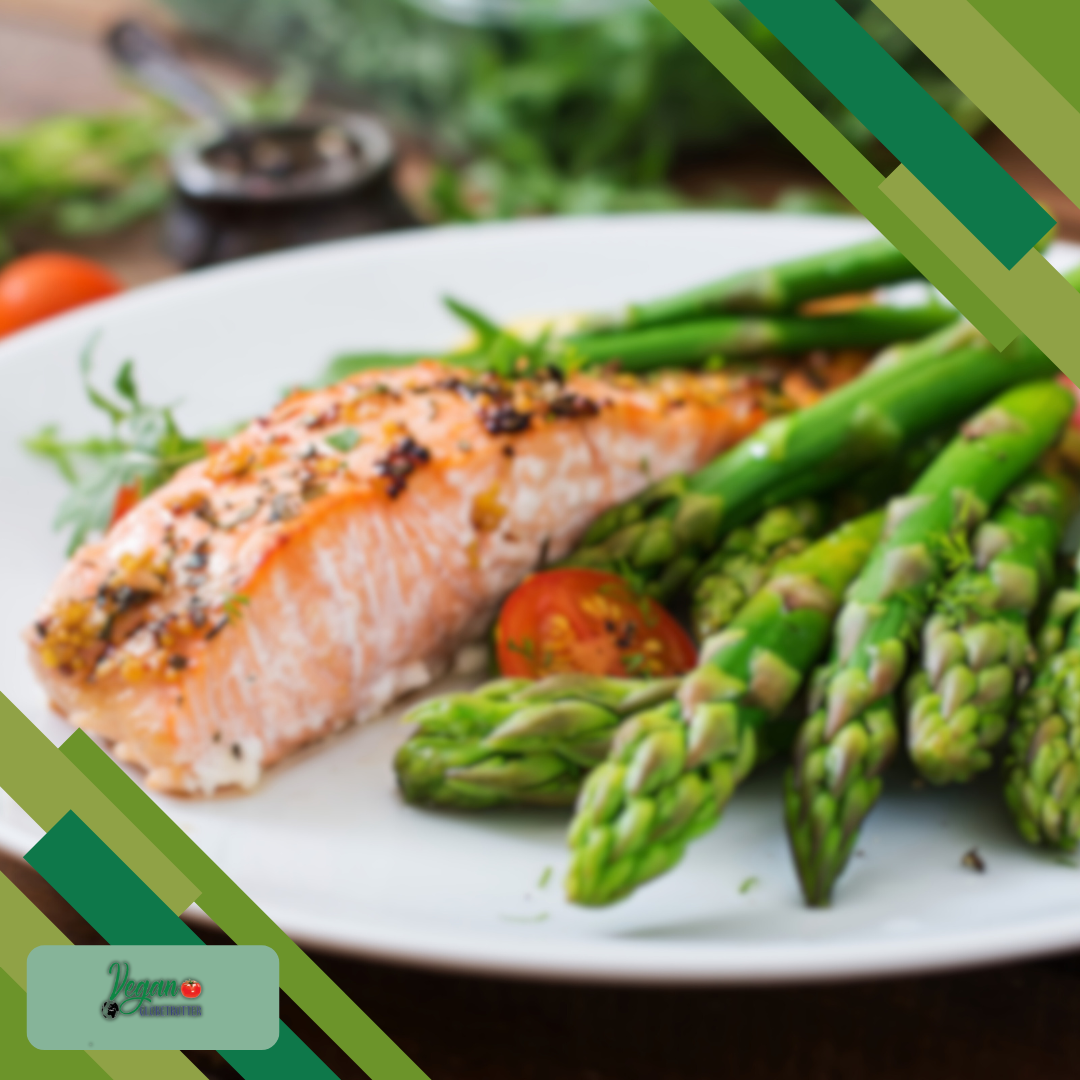
As we wrap up our exploration of raw asparagus, it’s clear that this vibrant vegetable holds a wealth of nutritional benefits and culinary potential. Packed with essential vitamins and minerals, asparagus can support everything from your immune system to heart health, making it a powerful addition to any diet. However, the debate over consuming it raw versus cooked highlights the importance of preparation and personal preference. Raw asparagus retains more nutrients than cooked, providing a boost in vitamins K and C, fiber, and antioxidants.
While beneficial, raw asparagus can be tough on the digestive system for some, so proper preparation is crucial. Asparagus shines in a variety of dishes, whether you choose to enjoy it raw for its crisp texture or cooked for enhanced flavor. Always wash and trim asparagus thoroughly to avoid any foodborne illnesses, especially when consuming it raw. By incorporating both raw and cooked asparagus into your meals, you can enjoy a diverse range of flavors and nutritional benefits.
Experiment with different recipes and preparations to find what best suits your palate and dietary needs. From salads to soups, and stir-fries to side dishes, asparagus offers endless possibilities for delicious and healthy eating. So why not give raw asparagus a try and discover a new dimension to this versatile vegetable? Your taste buds and body will thank you!
Frequently Asked Questions
Can Eating Raw Asparagus Cause Health Issues?
How Often Should You Eat Asparagus?
What are the best Seasons for Raw Asparagus?
Find Us on Social Media
Facebook: VeganGlobetrotter Join us on our Facebook page, VeganGlobetrotter, where we share mouthwatering plant-based recipes and tips to inspire your vegan lifestyle.
Instagram: _veganglobetrotter Follow us on Instagram at _veganglobetrotter to embark on a visual journey of delectable vegan dishes.
Pinterest: theveganglobetrotter Dive into the world of plant-based goodness and wellness with our Pinterest account, theveganglobetrotter.
Twitter: VeganGlobetrot Stay up-to-date with the latest vegan trends, insightful articles, and exciting updates by following us on Twitter at VeganGlobetrot.

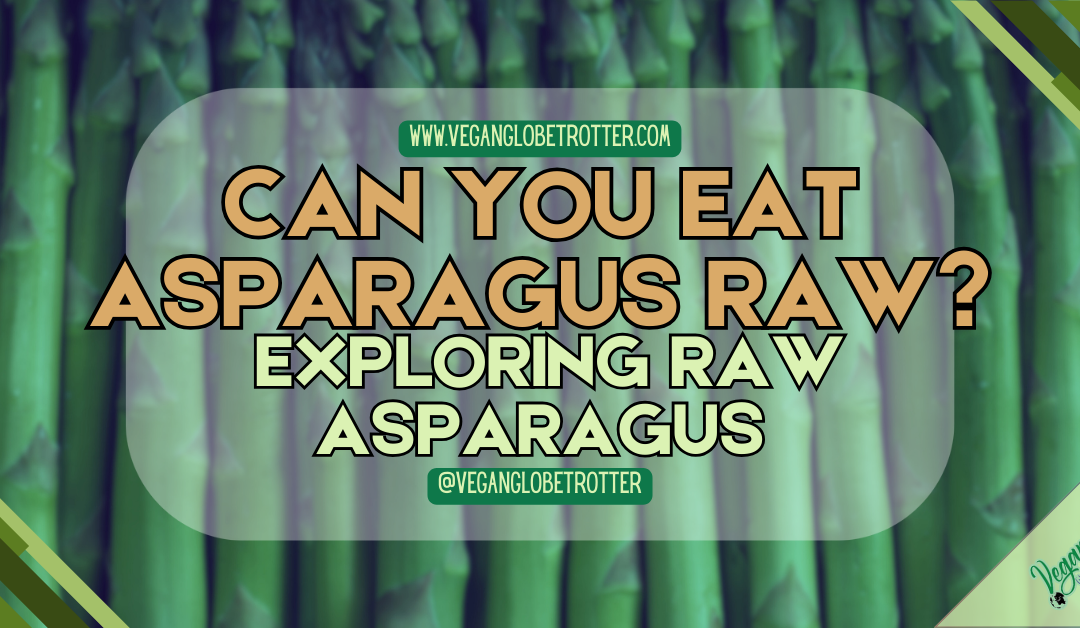

Don't miss out
when new recipes and information are added!
Join our newsletter for free recipes,
healthy living inspiration, and special offers
You have Successfully Subscribed!